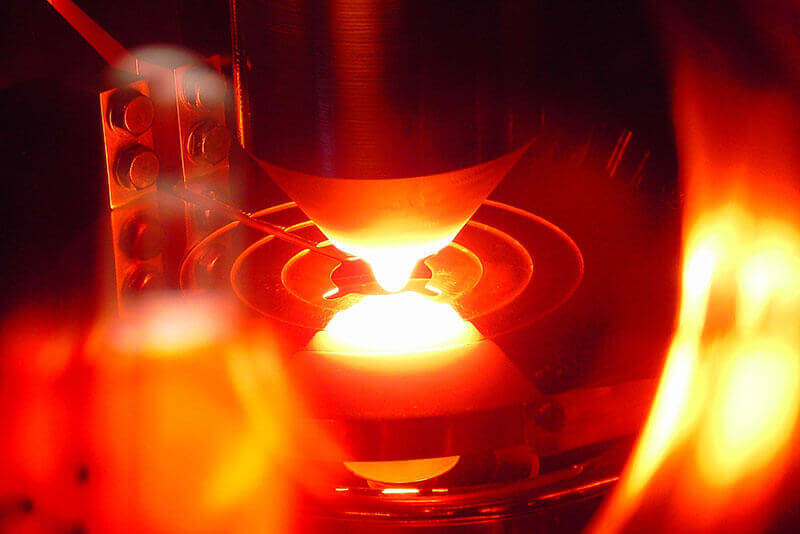The Process
In a chamber with a controlled atmosphere, a clean polycrystalline Silicon rod (source rod) is positioned above a high-frequency induction coil. When the high-frequency current is introduced into the Silicon rod very close to the surface, the bottom end of the rod starts to melt in a non-contact process. The rod is rotated slowly to ensure that it melts as homogeneously as possible. The melted zone is brought into contact with a thin monocrystalline seed crystal that is located under the coil and moved upward through a small hole in the middle of the coil. Once the seed crystal has been brought into contact with liquid bottom end of the source rod, the seed crystal is moved slowly downward while also rotating. A monocrystalline crystal now starts to grow on the seed crystal, following its crystal structure and orientation. The liquid zone is maintained as the source rod is fed in slowly from above and starts to melt, while the single crystal continues to grow on the seed crystal.
Slim rod pullers (SR) also work like Float Zone systems. Here, a thick polycrystalline Silicon rod (source rod) is positioned under the high-frequency induction coil. When the high-frequency current is introduced into the Silicon rod very close to its surface, the top end of the rod starts to melt in a non-contact process. Multiple polycrystalline seed crystals are dipped into the molten zone from above through holes in the coil. The seed crystals are then pulled upward, and multiple slim rods several meters in length and with diameters of 6–10 mm are pulled. At the same time, the source rod is fed in slowly from below. Doping can be performed by adding gaseous substances that diffuse into the melt.
The source rod is a (machined) product created in a Siemens-developed process for creating Polysilicon. From this many slim rods can be generated in a slim rod puller; these are then used as seeds in downstream Siemens processes.
Applications
Our FZ systems allow you to produce high-purity crystals that meet your specific needs.
